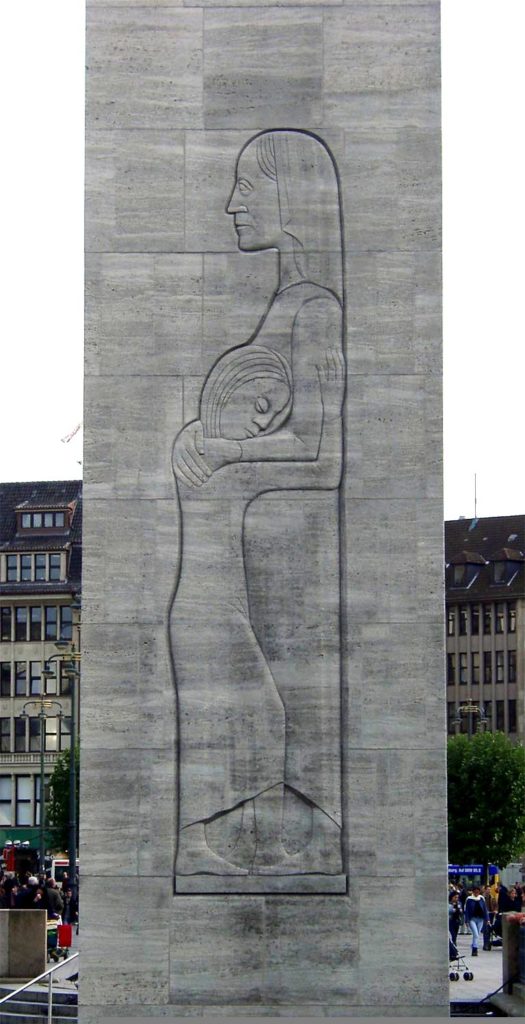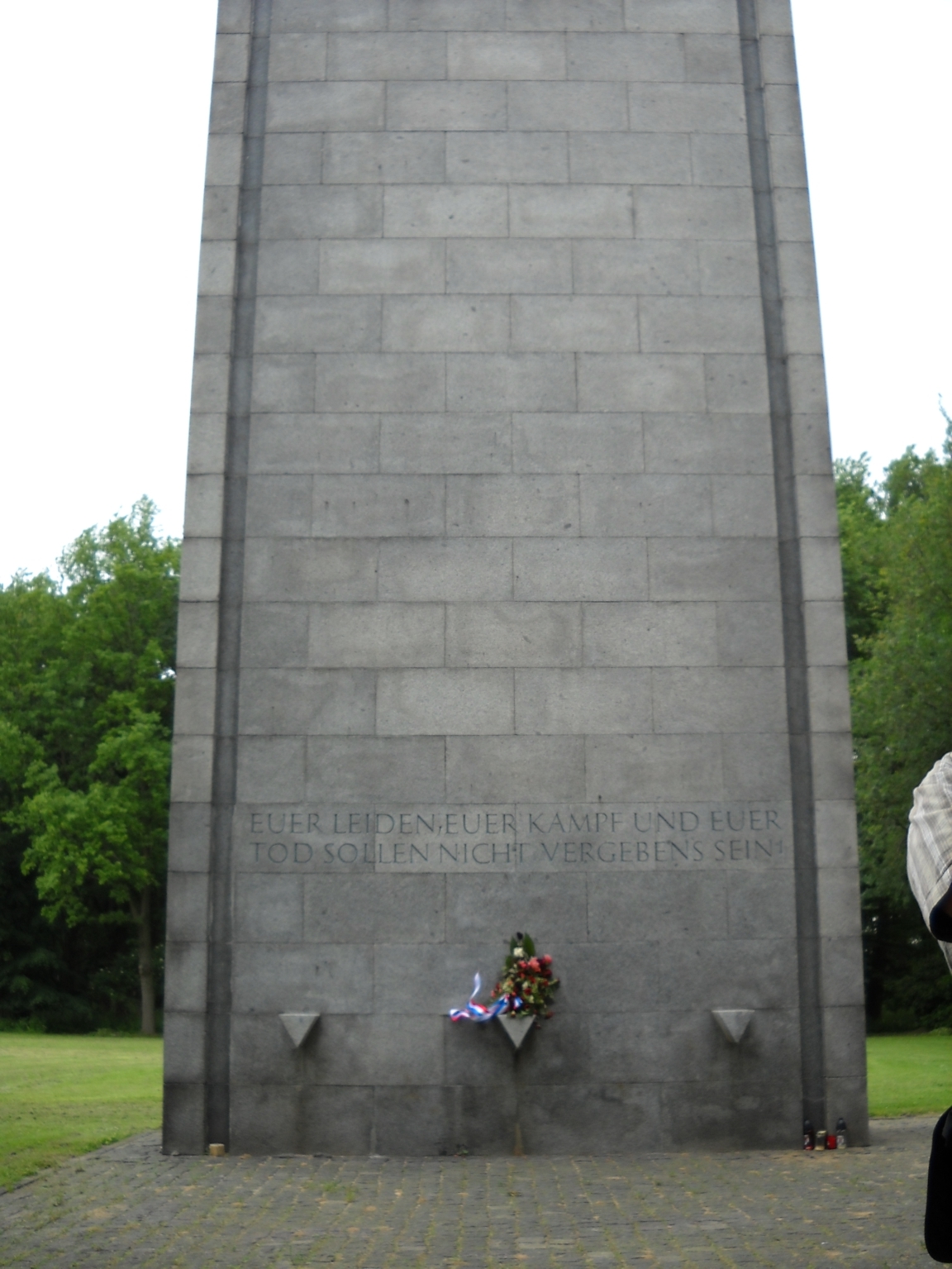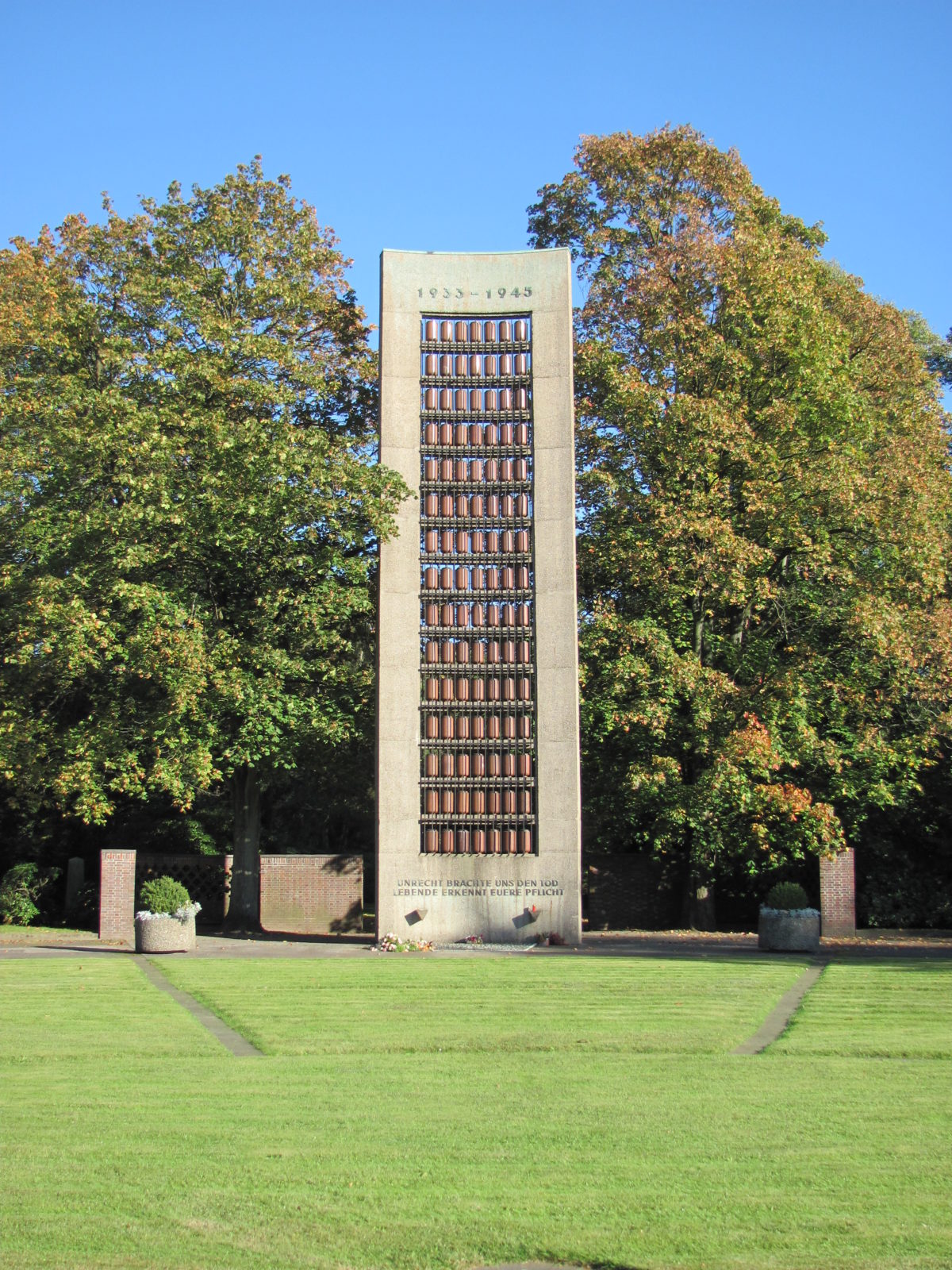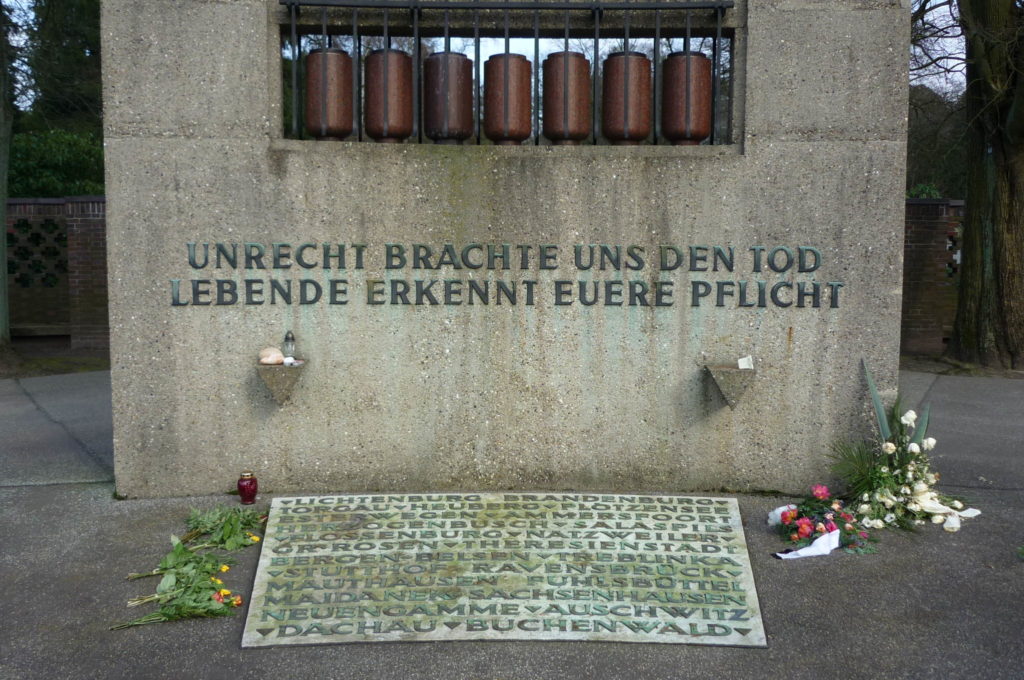Analyzing Monuments using crosstabulations of Historical Thinking Competencies and Types of Narrating
16. Oktober 2019, von Andreas Körber
The following is a follow-up in the discussion on Stéphane Lévesques model of historical competencies as presented in Public History Weekly, a few days ago, titled „Removing the ‚Past‘: Debates Over Official Sites of Memory“1 and my first extended comment on this published here on this blog.
The following is a follow-up in the discussion on Stéphane Lévesques model of historical competencies as presented in Public History Weekly, a few days ago, titled „Removing the ‚Past‘: Debates Over Official Sites of Memory“1 and my first extended comment on this published here on this blog.
A crosstabulation of competencies and patterns/logic of sensemaking like Stéphane Lévesque suggested2 is indeed useful for 'reading' individual monuments and making sense of their 'message', also. Stéphane’s filling of the table is a bit abstracht, general for this, so the following would in part be my own understanding.
It also is based on Rüsen’s notion that while the different patterns were developed sequentially over time, to 'older' ones are not lost, but still available and indeed visible in modern day thinking, in fact most of the time in combinations. What characterizes modern-time historical thinking, then, is the presence and dominance of 'genetic' thinking, while pre-modern thought would not have this type at its disposal at all. But then, our examples here are all 'modern', so that it may be a question of dominance and relative weight.
Take a monument for a civil war general:
- A spectator today may read it as a reminder to the origin of the current state of affairs, possibly the 'losing of the cause' (e.g. both the honoured general and the spectator being southeners) or to the liberation of the slaves (both northeners). In both cases, the monument would be seen as pointing to an origin of what is seen as valid today (the very definition of Rüsen’s 'traditional' type). This might explain why people adhering to the northern narrative would oppose to southern monuments, and vice versa, not believeing their story in the first place — and maybe fearing that keeping the monuments would signify that their version was to be seen as valid.
- In an exemplaric mode, however, both may accept the 'other side’s' monuments, because what they point at would not be seen as the origin of affairs, but rather a general rule, e.g. honouring people 'bravely fighting for their respective (!) cause'. The logic would be that each society would honor 'their heroes', who do not so much stand for the specific cause but for a general rule. What happens on the ground in Gettysburg, e.g., is something along this line: 'Traditional' commemorating attracts most people going there, but an exemplary 'cover-narrative' allows for common remembrance.
Consider an example from Hamburg, where I work 3: On our 'Rathausmarkt', there is a monument, honouring Hamburg’s dead from WW1. When it was erected in 1932, it looked as it does today. The inscription on one side reads 'fourty thousand sons of town left their lives for you' (in German: 'Vierzig Tausend Söhne der Stadt ließen ihr Leben für Euch') and a relief of a woman (mother) and child (daughter) apparently comforting each other in mourning (and therefore reminiscent of a pietà) by Ernst Barlach on the other side.
In 1938, the relief was exchanged for an eagle flying up.4
Did the form of commemoration, the valuing of the 40000 Hamburgians, change? I do think so.
Already the addition of 'for you' as a concession to the right parties changes a more traditional message into a more exemplary one, which is made prominent by the exchange of the relief: It is even more possible, because what are two different concepts and terms in English language, share a common word in German: 'Opfer':
Despite the active voice of the inscription and in spite of the (added) 'for you', the mother and daugther-relief marks the dead soldiers rather as victims of a greater context of war, to be mourned, their rather 'tragic' deaths and loss as the origin or our common grief, and therefore seems to incorporate elements of a new kind of monuments, developed in WW1, which do no longer provide, but rather question the meaning of the deaths.5 The eagle (or 'phoenix' as the sculptor Hans Martin Ruwoldt was commissioned), however, eradicated this (thin on not exclusive) layer of questionsing, and renders the 40.000 exemplaric 'sacrifices' – heroes to be emulated, celebrated.6.
In 1948, the lost Barlach-relief, was restored, alas not by Barlach himself, who had died meanwhile.

I do have a hard time constructing a genetic understanding of such a monument, maybe because a modern, genetic way of thinking needs to have been informed by the 'critical' mode of at least partly de-legitimizing the orientating power of traditional and exemplaric thinking.
Maybe this is the background for modern monuments being quite different, either often non-figurative — as Peter Eisenman’s Memorial to the Murdered Jews in Berlin, or many works by Jochen Gerz7 — or taking on forms of counter-memorialization8, thus setting in motion a kind of change, not just re-present-ing a past, but encouraging or even enforcing critical reflection on it.
It is easier for the Hamburg monument: Genetic thinking would question whether not only this heroifying way of commemorating heroes (even if not individual), but also the concrete form of public acknowledging of tragic loss can be timely, after we experienced another war and an inhuman dictatorship and genocide which was not least based on feelings instigated by such commemorating.9
But there is something more to reflecting about narratives — and especially on how to relate to them. As I wrote above, Memorials are narratives. Rüsen calls them 'narrative abbreviations', pointing to them standing for a specific narrative, i.e. a specific relation between a past (under memory), the present (of the authors and erectors of the monument as well as the intended public), and with regard to a specific future, constructed only partly in verbal narrative form, but also with non-verbal and sequentially narrative elements (even though in some cases it is only the verbal inscriptions which really hint to any historical meaning).
Memorials are more than only proto-narratives. Their (often) prominent (albeit also often overlooked) positioning, their (proto-)narrative structure and their own quality for lasting a long time (cf. 'monumentum exegi aere perennius), they do not only constitute a narrative relation from one temporal and social position towrds the past and the future, but also are meant to prolong the sense they make and to impose it on later generations. Monuments are about obligating their audience, the spectators with a certain narrative and interpretation. That qualifies them as parts of what we call 'politics of history', not only of commemoration, and what makes them political.
It therefore is paramount to read monuments as narratives, and not only in the de-constructive sense of 'what did those erectors make of that past back then', but also in the re-conctructive sense of 'in how far or how does this narrative fit into my/our relation to that past). In other words: Standing before a monument and thinking about monuments, we all need to (and in fact do) think in a combination of understanding the others‘ and deliberating our own narrative meaning-making.
Therefore we need to read them as narratives first, and become competent for it.
Monuments often take on the form of addressing people. Sometimes — as in the Hamburg case above — they address the spectator, reminding them of some kind of obligation to commemorate.10 But who is talking to whom? If the senate of Hamburg talkes to that to the Hamburg citizens of 1930-1932, can/will we accept that (a) the Hamburg Senate of today still admonishes us like that, and b) that we Hamburg citizens of today are still addressed in the same way?
In other cases, (inscriptions in) memorials might explicitly address the commemorated themselves, as e.g. in the confederate monument in Yanceyville, N.C., whose plaque reads 'To the Sons of Caswell County who served in the War of 1861-1865 in answer to the Call of their County', and continues in a 'We-Voice', signed by the Caswell Chapter of the United Daughters of the Confederacy'. So far so conventional. This might be rather unproblematic, since speaker-position and addressees are clearly marked. One might leave the monument even if one disagreed, not having to align with its narrative. Only if the presence of such commemorating in itself is inacceptable, action is immediately called for.
But there are other monuments which seem to talk from a neutral position, which in fact is that of the erectors, but by not being qualified, includes the spectator into the speaker position. The example I have ready at hand, is not from the US and not about war heroes, but again from Hamburg, this time from Neuengamme concentration camp memorial. In 1965, an 'international monument' stele11 was erected there, together with a whole series of country-specific memorial plates. The inscription on the monument reads 'Your suffering, your fighting and your death shall not be in vain' (my translation).
This now clearly is interesting in at least two respects: (1) it ascribes not only suffering and death, but also fighting to those commemorated and thereby possibly does not refer to those inmates who never had a chance or did not 'fight', who were pure victims, and (2) it speaks from a neutral voice which is not marked in time and social, political or event-related position. Whoever mourns at that place possibly silently co-signs the statement.

Consider an equal honouring of confederate generals in, say NC: 'Your fighting shall not have been in vain.' I would spark much more controversy and concers — and rightly so.
Still another example, the first Hamburg monument for the victims of National Socialism (from late 1945) on the Central Cemetry in Hamburg-Ohlsdorf, has an inscription 'Injustice brought Us Death — Living: Recognize your Obligation'.


Again, for analyzing and understanding, we need to recognize. The speaker position here, is clearly (metaphoricall) held by the victims to be commemorated. But whom do they speak to? Literally, it is the 'living'. In a very broad understanding, the monument/memorial therefore addresses all humans, quite in a way what Rüsen has addressed as the highest level of normative plausibility: broadening the perspective to the level of humanity.
This is not very problematic, since the inscription does talk of 'duty', not of 'guilt', it does not conflate the addressees with those who inflicted the injustice upon the victims. But it could have done. In 1945, the message would be clearly not merely universally humanistic, but at least also addressing the Germans as the society of the perpetrators. It does not condemn, but calls for recognizing the 'duty' and responsibility for commemorating and non-repeating as well as overcoming the structures of NS injustice, hinting at responsibility for not preventing them or even participating in them in the first place.
And today? In how far is the message the same for today’s society in Germany? The people living in Germany today do — apart from very few exceptions — no personal guilt or responsibility for what happened. In how far can or should they see themselvers addressed?
Again, there is no question as to the very general, humanity-related address. This encompasses any audience. But would that mean that there is no difference between any visitor to the memorial and Germans? Has the Nazi injustice (and similarly the Holocaust) become a matter of general, universal history only? Is there no special belonging to and message for German history? All these questions can and need be addressed — and especially so, since a considerable part of German society consists not only of people bornd and raised (long) after the 'Third Reich', but also of many who immigrated from other countries, societies and cultures meanwhile. Are they simply counted into the perpetrators‘ society? (no, I think), but are they (to feeld) addressed, too (yes!), and in the same way — to be reflected!
In order to make up our minds on monuments we have 'inherited' not only in political terms, we need to reflect their specific narrative message in a spectrum of time-relations. And we need to differentiate our terminology and enable our students to master a set of concepts related. We need, e.g., to distinguish honoring commemoration from reminding and admonishing. In Germany we have (not easliy) developed the notion of 'Mahnmal', admonishing, to be distinguished from a mere 'Denkmal'. But even this distinction is insufficient. A Mahnmal (in fact the literal translation to 'monument', from Latin 'admonere') may admonish to remember our own suffering inflicted on us by ourselves, some tragic or by others, but also may admonish to not forget what we inflicted on others. This is the specific form 'negative memory' of German memorial culture.
Therefore, there’s a lot more to be reflected in commemorating:
- Who 'talks'? who authors the narrative — and is what capacity (e.g. in lieuf of 'the people', of a certain group, …)?
- whom does the monument explicity address?
- what is the relation of explicit addressees and factual spectators?
- in how far is the message the same for us today as it was envisioned back then — and possibly realized? is it the same for all of us?
- what kind of message is perceived?
(cf. Körber 2014)
